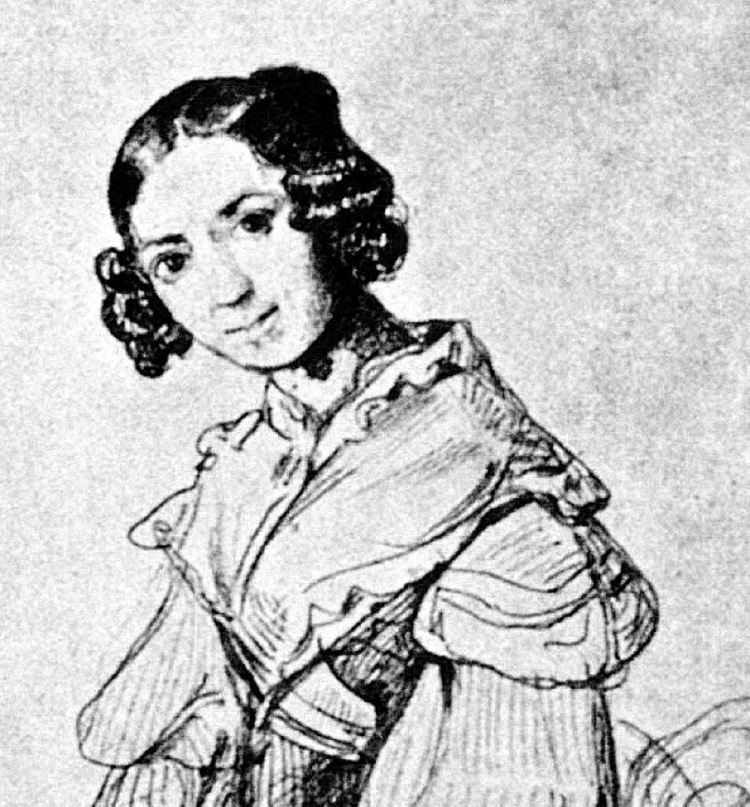Role Author | Name Adele Schopenhauer Language German Siblings Arthur Schopenhauer | |
 | ||
Pen name Henriette SommerAdrian van der Venne People also search for Johanna Schopenhauer, Arthur Schopenhauer, Heinrich Floris Schopenhauer | ||
Occupation AuthorPapercut artist | ||
Luise Adelaide Lavinia Schopenhauer, known as Adele Schopenhauer (12 July 1797 – 25 August 1849), was a German author. She was the sister of the philosopher Arthur Schopenhauer and daughter of author Johanna Schopenhauer. Henriette Sommer and Adrian van der Venne were pseudonyms used by her.
Contents

Life and work
Adele Schopenhauer was born in Hamburg to Heinrich Floris Schopenhauer, a businessman, and his wife Johanna. She grew up in Weimar under the influence of a circle of artists and scholars who gathered in the literary salon run by her mother. She was highly gifted and engaged in literature and poetry. She not only wrote fairy tales, poems, and novels, but was also a talented papercut artist. Both her papercuts and her literary contributions have been recognized and appreciated, especially in the English-speaking world.
Loss of assets in 1819
In May 1819, the Danzig banking house Muhl collapsed. Johanna and Adele Schopenhauer had deposited all the money they had inherited upon Heinrich Schopenhauer's death in 1805 in that bank, and thus lost a large part of their assets when the bank collapsed. Arthur Schopenhauer had wisely left only one-third of his assets in Muhl and was not willing to engage in a settlement with Muhl. This incident led to a further deterioration of the relationship between the two women and Arthur, because they repeatedly sent him letters, in vain, asking him to approve the settlement. The further development of the lawsuit proved Arthur right. Mother and daughter settled on an agreement with a 70% loss and lost most of their wealth. Arthur, however, waited and refused to cash in his promissory notes. Muhl, who was considered a shrewd tactician, tried till the end to get Arthur to agree to a settlement with the generous offer of a 70% asset return plus a flock of sheep. But when Muhl recovered financially and again became solvent, Arthur was able to get his entire money back some years later.
A close friend of Goethe's daughter-in-law Ottilie (de), Adele Schopenhauer often visited Goethe's house in Weimar. She was known to have called Goethe "father".
This loss of wealth was not without drastic consequences. Although Johanna could make some earnings through her writing career and Adele retained some residual assets because she was protected in part by her immaturity, the lifestyle of the Schopenhauer women in the 1820s was very different from that of earlier years. This is also apparent from a letter Adele wrote 17 years after the loss, in which she speaks of "false prosperity".
Move to Bonn
Due to the change of circumstances in Weimar and their unfavorable financial situation, the standing of the Schopenhauers in Weimar apparently dropped. Adele was able, in 1828, to persuade her mother Johanna to move to Bonn. They could not initially afford to live year-round in Bonn, so they temporarily moved to Unkel, a cheaper city. In Bonn, Adele was a close friend of Annette von Droste-Hülshoff and a lover of Sibylle Mertens-Schaaffhausen.
After her mother's death in 1838, Schopenhauer travelled a lot, mostly to Italy, until she finally returned to Bonn, seriously ill, where she died in 1849 and was buried on Goethe's 100th birthday. Her friend and life partner Sibylle Mertens-Schaaffhausen made a touching epitaph in Italian. Four days after Schopenhauer's funeral, Mertens-Schaaffhausen held a private memorial service, following a pattern from classical antiquity, in her garden on Wilhelmstraße. Adele Schopenhauer's grave is located in the old cemetery in Bonn.
